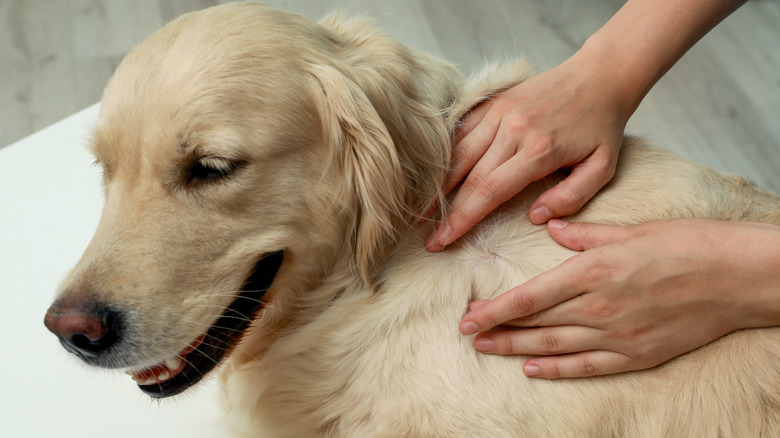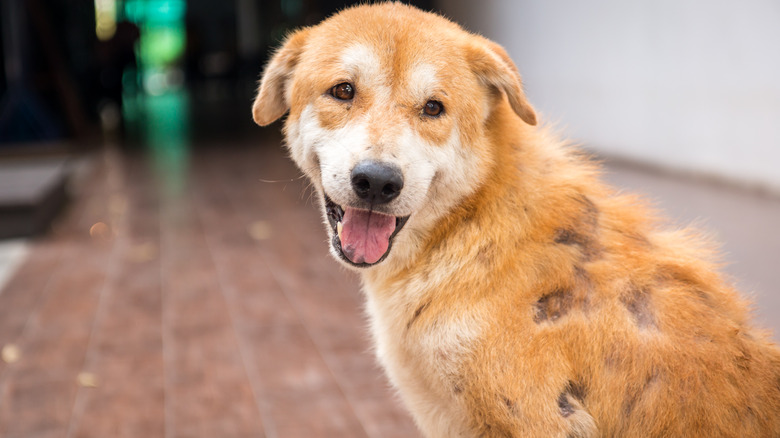Telltale Signs Your Dog Has Fleas (Even If You Can't See Them)
The last thing you want is for your dog to be dealing with fleas. Fleas are a type of parasite that live and feast on animals, including dogs. They are extremely tiny, usually smaller than a grain of rice. Even though it may be possible to be able to see fleas on some dogs, it can oftentimes be hard to tell if your pup actually has fleas just by looking at them. However, even if you can't actually see any fleas crawling over your dog's fur, there are other signs you can look out for that may indicate to you that your pup is dealing with this pesky parasite infestation. Fleas are uncomfortable for dogs and can sometimes carry disease, so it's important to figure out if they have them so you can start treating them as soon as possible.
There are many ways a dog could get fleas, with one common way being through contact with another dog who has fleas. It's also possible for dogs to get fleas from other wild animals as well as fleas that may be living in the grass outside. Dogs are more likely to get fleas when it's warm out, however using flea protection all year is going to be your best bet to prevent your pet from getting fleas. If you think your pup may have come down with fleas, these are some signs to look out for, and be sure to talk to your vet about the best treatment plan for your pooch if they are showing symptoms of a flea infestation.
Skin issues and irritation
Issues related to the skin are the most common symptom for dogs with fleas. Fleas irritate a dog's skin, making it itchy and leading to lots of scratching, which will be one of the main signs that indicate your pup has fleas. If your dog has fleas, you will probably also notice them biting, chewing, or licking their fur more often due to the itching. If you aren't sure if your dog's itching is from fleas or dry skin, look to see if they have white, flaky patches, as these typically mean your dog's skin is just dry. If your dog has fleas, they may have areas of skin that are crusty, especially near the hip, tail, and thigh areas.
While you might not be able to see the actual fleas on your dog's skin, you may be able to see flea bites, which look like small, red bumps. Because of their itching and chewing, a dog with fleas may also have scabs on their skin. Along with scabs, they can also often have skin lesions or hot spots. Check your pup's skin if you suspect they have fleas, and talk to a vet right away if they show any signs.
Flea dirt
While you might not be able to notice the literal fleas crawling on your dog, you can look out for other signs of fleas making their presence known. One flea-related substance to look out for on your dog's skin is called flea dirt. The name comes from the fact that flea dirt looks similar to actual dried dirt, usually appearing as gritty, black specks on your pup's skin. Despite its name, however, flea dirt isn't actually dirt but rather a combination of flea feces and blood meal.
If you aren't sure if it's soil or flea dirt on your pup's skin, try wetting their fur, as flea dirt will change from a dark, black color to red when wet due to the blood it contains. Not only can flea dirt be a telltale sign of fleas when it's on your pup's skin, but you may also find it around your house if your dog is infested. If your dog has flea dirt on them, it's important to start treating it for fleas right away, as flea dirt can be used as food for larvae and lead the fleas to keep multiplying and thus getting worse.
Anemia symptoms
When fleas go untreated, it's possible for dogs to contract anemia. If your dog has fleas, these parasites are feasting on their blood, which can become dangerous when there are a lot of them. Small dogs are especially at risk; If your pup loses too much blood from fleas, there's a chance they can develop anemia.
If your pup has contracted anemia from fleas, there are signs to be aware of. One common sign of anemia is pale gums. Other symptoms include lethargy, loss of appetite, weight loss, and pale skin. If your dog is showing any signs of being anemic, take them to a vet, as they may need some sort of treatment, such as a blood transfusion.
Hair loss
Another telltale sign your dog could have fleas is if they are experiencing hair loss. One reason they could be losing fur is due to the excessive itching and chewing that comes along with fleas. It's also common for dogs with fleas to start losing fur around their bottom and near the base of their tail. While it's likely for a dog's hair to start falling out around their tail, it's also possible for a pup with fleas to lose hair all around their bodies in patches.
It is more likely for dogs with a more severe case of fleas to experience hair loss. If your pup is losing hair, there is also a good chance they could be allergic to fleas, a condition called flea allergy dermatitis. This condition is caused by a reaction to flea saliva. If you suspect your dog is allergic to fleas, it's especially important you get them treated right away.
Small white pieces in their stool
Along with potential symptoms and diseases that dogs can get from fleas, they can also become infected with other parasites fleas carry, such as tapeworms. The most common way for a dog to get tapeworms is by eating a flea, which may be likely to happen considering the scratching and licking that comes along with having fleas. Thankfully, tapeworms don't usually pose any major issues to dogs, but looking out for any signs of them may alert you to the fact that they could have fleas.
One way you can tell if your dog has tapeworms is by inspecting their poop. After a dog with tapeworms defecates, you may be able to see the worms in their stool, appearing like small, white pieces similar to grains of rice. Other signs your dog may have tapeworms include licking near their bottom and scooting their butt across the floor. If you notice your dog has worms in their stool, make sure to also check them for fleas since they often go hand in hand.





